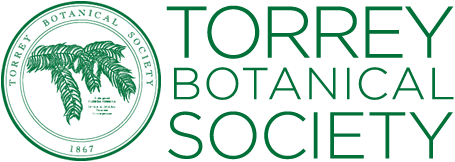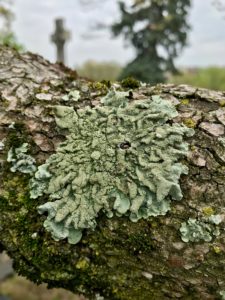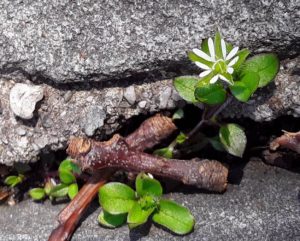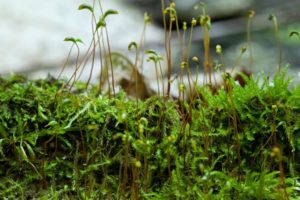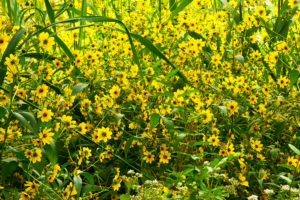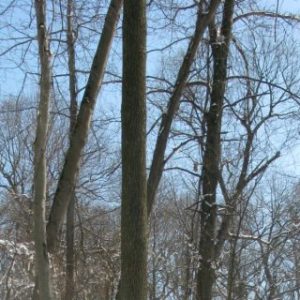2019 FIELD TRIP SCHEDULE
The Torrey Botanical Society has scheduled several trips for the 2019 field season, including a joint trip with the Botanical Society of America’s Northeastern Section and the Philadelphia Botanical Club. Stay tuned, as we will update the list throughout the year.
Saturday, May 4, 2019, Lichen Walk in Woodlawn Cemetery, The Bronx, NY.
The detrimental effects of air pollution have on lichen in urban areas is a long-discussed topic. In the past decades, lichens declined and nearly vanished from cities. Lately, however, with the help of clean air policies and air quality improvement, lichens have been observed to recolonize urban landscapes.
With urbanization, urban cemeteries have proven to be valuable environments for biodiversity conservation. Woodlawn Cemetery is a unique place within the five boroughs, supporting many species of lichens on the graves, trees, and footpaths, including some sensitive to pollution. Nearly 30 species have been observed at the cemetery thus far, and we are likely to find more with time. In a recent survey of the cemetery, one individual of Usnea mutabilis Stirton was found, a species that had not been reported in New York City since 1824!
Please join us for a lichen walk at 12:00 pm, May 4th, through the beautiful Woodlawn Cemetery grounds. The goal of this walk, a photos-only excursion, will be to observe the known lichen diversity from Woodlawn Cemetery, search for new species in the area, and enjoy the beauty and architecture of the monuments and mausoleums. Included below is a list of species found at the cemetery.
The excursion will last 3 hours, please come prepared with good walking shoes and a hand lens. For non-members of the Torrey Botanical Society, you will also 10 dollars in cash as a donation to Woodlawn Cemetery for allowing us to tour their premises as a group (The Torrey covers the donation for its members).
Directions:
Meeting at 12:00 pm at the northeast entrance to the cemetery, at the intersection of Webster Avenue and 233rdSt. From NYC, by Metro North, take the Harlem line direction North White Plains and stop at Woodlawn, turn right on 233rdStreet exiting the station and walk 2 minutes. By the subway, take the uptown 2 or 5 train and exit at 233rdStreet, walk downhill (west) on 233rdfor 10 minutes.
Trip Leader: Jordan Hoffman, (Graduate Student/PhD candidate) at the New York Botanical Garden, jhoffman2@gradcenter.cuny.edu
Saturday, May 18, 2019, Nature Walk in Inwood Hill Park, Manhattan, NY.
Located at the northernmost tip of the island of Manhattan, Inwood Hill Park contains the last remaining native forest and saltmarsh. Despite total urbanization of its surrounding area, the glacier-carved hills and valley of Inwood Hill Park continue to provide refuge for some of the rarest native plants in the region. Join me on a quest to find these hidden gems of Inwood Hill Park. Now is the best time to find tens of thousands of Dutchman’s Breeches (Dicentra cucullaria) blooming among Spicebush (Lindera benzoin) in the rich valley forest. The flowers of Pinkster Azalea (Rhododendron periclymenoides) should be conspicuous if you don’t get distracted by the profuse blossom of Smooth Serviceberry (Amelanchier laevis) and Lowerbush Blueberry (Vaccinium pallidum) growing on dry rocky ridges. One of the rarest trees in our region, Butternut (Juglans cinerea) was also recently located in the park, it is threatened by an invasive disease known as the Butternut Canker.
A long history of human habitation in Inwood Hill Park means that we will encounter some unusual non-native species, introduced intentionally or accidentally. Ohio Buckeye (Aesculus glabra) has proliferated in lower layers of the canopy; Kenilworth ivy (Cymbalaria muralis) decorates the remnant stone walls with its delicate flowers; Italian Lords-and-Ladies (Arum italicum) became a horrific invasive which was targeted by an eradication program, we will search for that plant and see if the eradication worked.
The field trip will last for 3 hours (10 AM to 1 PM), please come prepared with good walking shoes for uneven terrain and hand lens as we may examine the fruits of sedges (Carex spp.). This walk is free, RSVP is preferred but not required, please contact me at zihaowan@buffalo.edu, or text/call me at 347-498-6050.
Directions:
We will meet at the park entrance at 10 AM, on Saturday 5/18, at the intersection of Seaman Avenue and Isham Street, the entrance is between a baseball field and tennis courts. The easiest way to get there is public transportation. Take A train to the last stop at West 207thStreet, walk north for two blocks along West 207thStreet and turn right at Seaman Ave. Keep walking until you see Isham Street.
Trip Leader: Zihao Wang is a botanist whose focus is on the rare plant species in the New York metropolitan area. He has collaborated with The New York Botanical Garden, New York Natural Heritage Program, and NYC Parks in documenting occurrences of rare plants and exotic plants.
Saturday, June 29, 2019, Field Trip in Van Cortlandt Park, The Bronx, NY.
Meet us on the 29th of June where we will explore Van Cortlandt Park, a botanically rich park in NYC. Diverse ecological communities occur here; oak-hickory forest, rocky summit grassland, successional old field and so much more. NY state rarities also grow here Virginia snakeroot (Endodeca serpentaria), Strawberry bush (Euonymus americanus), Great Plains flatsedge (Cyperus lupulinus), Little-leaf tick trefoil (Desmodium ciliare) among others!
The field trip will last for 3 hours (11 am to 2 pm), please come prepared with good walking shoes and a hand lens.
Directions:
We will meet at 11 am, at the Van Cortlandt park entrance on 242ndStreet and Broadway.
The easiest way to get there is public transportation. Take the 1 train to the 242nd Street station, other options are bus Bx9 to West 244th Street or bus BxM3 Express Bus to 244th Street (this bus runs from mid-town Manhattan with a stop at the Museum’s entrance to Van Cortlandt Park) and Metro-North Hudson River Line to Marble Hill Station, transfer to the Bx9 bus or #1 subway as above. By car, take the Major Deegan Expressway/NYS 87 or take the Henry Hudson Parkway/Saw Mill River Parkway. Metered and non-metered street parking is available in the 6000 block of Broadway on both sides of the street. Off-street parking is available at the Van Cortlandt Park Golf Course 115 Van Cortlandt Park S, Bronx, NY 10471.
Trip Leader: Christian Liriano, cliriano1018@gmail.com, 646-483-4974
Saturday, July 27, Vascular and Non-Vascular Plant Walk in Alley Pond Park, Queens Co., NY
Alley Pond Park is a natural gem in the middle of northeastern Queens. Glacial kettle-hole ponds pockmark this landscape of forests, meadows and freshwater wetlands that transition to saltwater wetlands and tidal flats before meeting Little Neck Bay on Long Island Sound.
We will search for unusual species of bryophytes that were documented 14 years ago. Species to be on the lookout for: Warnstorfia exannulata, Calypogeia fissa, Odontoschisma prostratum, Pallavicinia lyellii, Riccia fluitans, Ricciocarpus natans. These are common species you usually find outside the city in less disturbed ecosystems. Historically, 59 species of mosses and 19 sp. of liverworts were recorded for the park, so who knows what we will find! And of course, we will also survey for vascular plants!
The field trip will last for 3 hours (11 am to 2 pm), please come prepared with good walking shoes and a hand lens. This walk is free.
Directions: Meeting at 11:00 am in front of Alley Pond Park entrance, 230-18 Kingsbury Ave, Oakland Gardens, NY 11364.
Public Transportation: To get to Alley Pond Park, take the E subway to Union Turnpike-Kew Gardens and switch to the Q46 Bus and take it to the Union Tpk/Grand Central Pkwy stop. When you get off the bus, walk up Grand Central Pkwy(5 min walk) until the parkway becomes Kingsbury Avenue.
By Car: Look up “230-18 Kingsbury Avenue” on Google maps
Trip leader: Christian Liriano, cliriano1018@gmail.com, 646-483-4974
Sunday – Thursday August 11-15, Joint Field Meeting to Adams County, OH, Joint Meeting of the Botanical Society of America, The Torrey Botanical Society and the Philadelphia Botanical Club.
Each year the Botanical Society of America, the Torrey Botanical Society, and the Philadelphia Botanical Club sponsor a field meeting in an area of the northeastern United States. The 2019 meeting will explore Adams County, Ohio and will be housed at Shawnee Lodge & Conference Center.
Adams County is located in the beautiful rolling hills of Southern Ohio. It is bounded on the southern side by the Ohio River. Adams County is noted for its fertile farmland, forests, wildlife, prairies and limestone deposits.
2019 Joint Field Meeting Registration – Maximum 50 Participants – Deadline June 1, 2019
Registration form can be found here.
We have made every effort to keep expenses to a minimum, but keep in mind that there is limited lodging in Adams County and this is the peak of tourist season.
Field Trip locations
ADAMS LAKE PRAIRIE STATE NATURE PRESERVE – This sparsely vegetated xeric, or dry, prairie is situated on a highly eroded slope of calcareous Estill Shale surrounded by a second-growth oak-hickory woodland. Red cedar, post oak and blackjack oak occur sporadically in the prairie opening.
Prairie grasses are sparse, but Adams Lake Prairie supports diverse prairie forbs including a stand of prairie dock. Some of the interesting plants found growing at this cedar barren prairie include spider milkweed, shooting-star, green milkweed, Carolina buckthorn, American aloe, slender blazing-star and large summer bluets. (http://naturepreserves.ohiodnr.gov/adamslakeprairie)
CHAPARRAL PRAIRIE STATE NATURE PRESERVE –This is an outstanding xeric limestone prairie with post and blackjack oak. It supports the most extensive population of rattlesnake-master in the state. Prairie dock and spiked blazing-star are also unusually abundant at this site.
Eleven state-listed species have been recorded at the preserve including spider milkweed, prairie false indigo, pink milkwort and American bluehearts. Little bluestem is the dominant prairie grass.(http://naturepreserves.ohiodnr.gov/chaparralprairie)
KA-MA-MA PRAIRIE – The region provides canvas for classic prairie open grasslands, cedar-dominated glades, light-shaded dry bluffs, and young forests composed of oaks, hickories and scrub pines. The grasslands have an unusual number of classic short-grass prairie species such as Little Bluestem, Prairie Dock, Rattlesnake Master, and False Gromwell. The extremely rare Prairie Gentian was found here and is one of only two known locations in the entire state. (http://arcofappalachia.org/ka-ma-ma-prairie/)
CHALET NIVALE PRESERVE – The dolomite bedrock of Chalet Nivale creates a compelling karst-country landscape of springs, seeps, grottos, and sinkholes. These alkaline soils and bedrocks are renowned for producing a diverse assemblage of rare and endangered wildflowers, ferns and shrubs, including herbs with prairie-associations, such as Climbing Milkvine, Stiff Gentian and Tall Larkspur. Ancient White Cedar Trees, isolated hundreds of miles south of their normal range in the North Woods, cling to the bluffs of the cliffs. (http://arcofappalachia.org/chalet-nivale-preserve/)
LUCY BRAUN LYNX PRAIRIE PRESERVE – Designated a National Natural Landmark in 1967, Lynx Prairie was protected to save the best of the few remaining remnants of the once extensive prairies of this area. This preserve features a series of natural grassland openings that appear as islands in an otherwise forested area. These natural openings, called cedar barrens or glades, are prevalent throughout the preserve system. (https://www.nature.org/en-us/get-involved/how-to-help/places-we-protect/edge-of-appalachia-lynx-prairie-trail)
DAVIS MEMORIAL STATE NATURE PRESERVE- Geologic features include excellent Silurian dolomite cliffs. Both Greenfield dolomite and Peebles dolomite are exposed. Ohio black shale occurs on the tops of the knobs. An impressive fault, causing vertical displacement of 30 feet, exposes adjacent cliffs of Greenfield and Peebles dolomite.
The preserve’s dolomite cliffs provide habitat for white cedar and sullivantia. American aloe, dwarf hawthorn, hairy wing-stem, side-oats gramma grass and purple coneflower are found in the prairie openings. Other significant species include tall larkspur, limestone Adder’s-tongue fern, narrow-leaved bluecurls and Walter’s violet. (http://naturepreserves.ohiodnr.gov/davismemorial)
Evening Speakers (talk titles to follow)
Sunday evening -Guy Denny
Monday evening – Allison Cusick
Tuesday evening – Martin McAllister
Wednesday evening – Rick Gardner
Facilities – We have access to a room that will likely be available for plant ID after hours.
Lodging – Housing will be at Shawnee Lodge & Conference Center, 4404B State Route 125, West Portsmouth, Ohio 45663. All lodge rooms are air-conditioned/heated and have satellite television, AM/FM alarm clock radios, telephones, iron and ironing boards, refrigerators, bathtubs, and a private balcony.
Dining – Breakfasts and dinners will be served at Shawnee Lodge & Conference Center. Lunch is box-style and will be picked up at breakfast. Shawnee Lodge requires that all food and beverages be purchased through the lodge.
Registration Form and Additional Information –Registration form is available here.
Questions – contact Bonnie Isaac – isaacb@CarnegieMNH.org
Saturday, September 21, Aquatic Plant Primer with Mary Leck in John A. Roebling Park, Hamilton Township, NJ. Joint Trip with the Philadelphia Botanical Club.
Aquatic plant primer, an introduction; all are welcome. In the morning, we will examine common wetland species in and around Spring Lake, but Heteranthera multiflora and Wolffiella gladiata, NJ rare species, are likely. After lunch, we will visit a tidal marsh site, part of the northernmost tidal freshwater wetland on the Delaware River.
The field trip will last for 5 hours (10 am to 3 pm), please come prepared for wet walking. Knee high boots or VERY old footwear are recommended especially for the tidal site. Bring lunch and beverage; insect repellent is not usually needed. This walk is free.
Directions: Meeting at 10:00 am at Spring Lake, John A. Roebling Park, Hamilton Township, NJ. (from South Broad St. (NJ Rt 206), turn onto Sewell Ave., at the end, turn left and drive down the hill to the parking lot).
Trip leader: Mary A. Leck, 732-821-8310 or leck@rider.edu. Cosponsors: Friends for the Abbott Marshlands and Mercer County Park Commission.
Saturday, November 2: The Physical World of Plants Walk in Van Cortlandt Park, The Bronx, NY. (Postponed from the 2nd to the 16th).
There are two themes to this walk; Understanding how the physical world of plants influences their growth, development, reproduction, evolution, and the identification of woody-non woody plants as they are in found in late fall and winter. For the first theme, I will explain how physics has been juxtaposed with biology to better understand plant form-function relationships, ecology, and their evolution. I will cover a wide range of topics- from the evolution of plant body plans, and the movement of water through plant roots, stems, and leaves. The second theme; we will look at overall form, bark, twig features, leaf scars, and fruit remnants, among other characters of various woody and non-woody plants.
The field trip will last for 3 hours (11 am to 2 pm), please come prepared with good walking shoes, your favorite winter botany guide and a hand lens. Bring lunch and beverage. This walk is free and please RSVP here: https://www.eventbrite.com/e/the-physical-world-of-plants-walk-in-van-cortlandt-park-bronx-co-ny-tickets-73966575017
Directions:
We will meet at 11 am, at the Van Cortlandt park entrance on 242ndStreet and Broadway.
The easiest way to get there is public transportation. Take the 1 train to the 242nd Street station, other options are bus Bx9 to West 244th Street or bus BxM3 Express Bus to 244th Street (this bus runs from mid-town Manhattan with a stop at the Museum’s entrance to Van Cortlandt Park) and Metro-North Hudson River Line to Marble Hill Station, transfer to the Bx9 bus or #1 subway as above. By car, take the Major Deegan Expressway/NYS 87 or take the Henry Hudson Parkway/Saw Mill River Parkway. Metered and non-metered street parking is available in the 6000 block of Broadway on both sides of the street. Off-street parking is available at the Van Cortlandt Park Golf Course 115 Van Cortlandt Park S, Bronx, NY 10471.
Trip Leader: Christian Liriano is a naturalist based in NYC/student at CUNY. His research interests are the community/ecosystem ecology of forests and aquatic ecosystems and an emerging field “ecological mechanics” that merges biomechanics with biology and ecology. cliriano1018@gmail.com, 646-483-4974.
